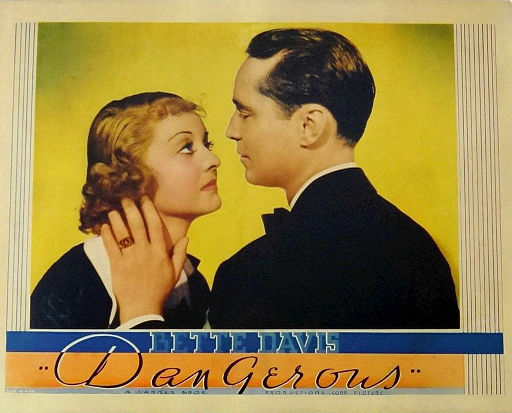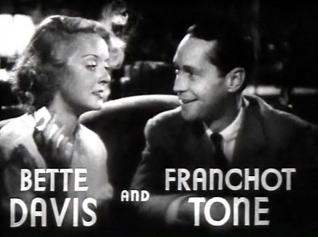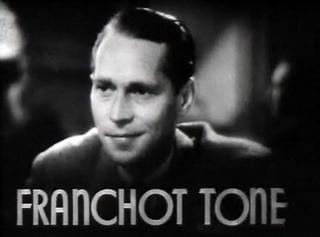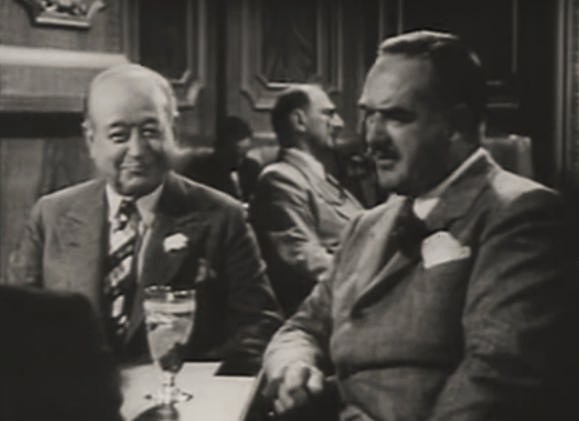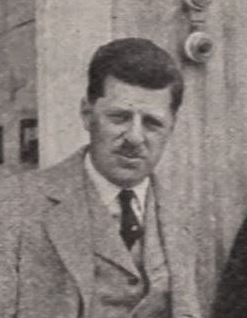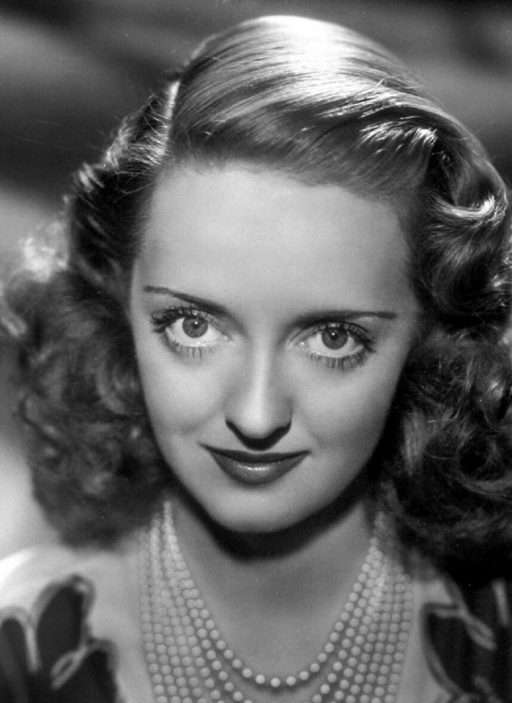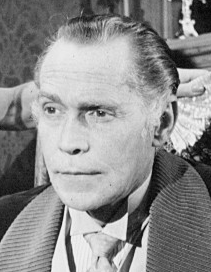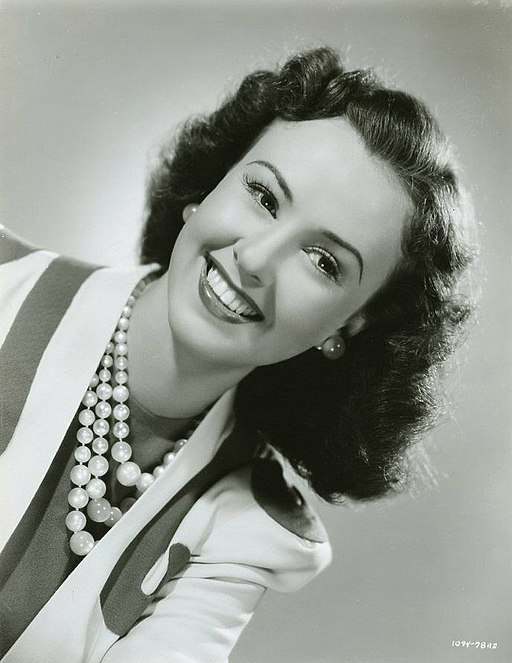Dangerous - 1935
back| Released by | Warner Bros. |
| Director | Alfred E. Green |
| Producer | Harry Joe Brown |
| Script | Laird Doyle |
| Cinematography | Ernest Haller |
| Music by | Ray Heindorf |
| Running time | 79 minutes |
| Film budget | Unknown |
| Box office sales | $ 2.2 million |
| Main cast | Bette Davis - Franchot Tone - Margaret Lindsay |
Dangerous
A Poignant Tale of Redemption
"Dangerous" is notable for Bette Davis's performance, which won her the Academy Award for Best Actress. The film itself is a drama centered around a troubled actress whose self-destructive habits are tempered by the love of an infatuated fan. The movie, however, does not have extensively documented financial details like the budget or exact box office sales.
Related
Dangerous – 1935
Summary and Analysis
"Dangerous" is a film that explores the turbulent life and career of a once-famed actress, Joyce Heath, portrayed by Bette Davis in an Academy Award-winning performance. The film begins with Joyce, whose brilliant career has been derailed by a series of personal and professional disasters, being found in a decrepit state by architect Don Bellows, played by Franchot Tone. Bellows, captivated by her past glory and tragic beauty, believes that Joyce still possesses the talent that made her a star and is determined to help her regain her former status.
Bellows takes Joyce into his care, moving her into his country home where her presence begins to cause tension. Bellows is engaged to Gail Armitage (Margaret Lindsay), who becomes increasingly concerned about the mysterious and unpredictable Joyce. Despite the warnings, Bellows becomes infatuated with Joyce, seeing in her a damaged soul that he can rescue.
Joyce manipulates those around her, alternating between moments of vulnerability and capriciousness. Her behavior becomes increasingly erratic as she battles her inner demons and the fear of being a "jinx" to everyone she cares about. The film escalates to a climactic moment where Joyce, feeling cornered and desperate, decides to stage a dramatic scenario that could either redeem her or lead to further destruction.
The narrative culminates in a tense finale that tests the boundaries of sacrifice, love, and the desire for personal redemption.
Analysis
"Dangerous" serves as both a compelling melodrama and a showcase for Bette Davis's formidable acting talent. The film is structured around the theme of redemption and the destructive nature of fame. Davis's portrayal of Joyce Heath effectively captures the fragility and volatility of a fallen star struggling to reclaim her lost dignity and professional stature.
Director Alfred E. Green uses a mix of close-ups and mid-shots to emphasize Joyce's emotional isolation and the impact of her presence on others. The cinematography by Ernest Haller enhances the moodiness of the film, with stark contrasts between the shadows and light that mirror Joyce’s turbulent psyche.
The script, penned by Laird Doyle, offers a critique of the Hollywood star system, subtly commenting on the precarious position of women in the entertainment industry. It highlights how quickly stardom can fade and how society discards its once-adored celebrities. Joyce’s character oscillates between being a victim of her circumstances and an architect of her downfall, providing a complex look at issues of accountability and victimhood.
Musically, Ray Heindorf's score complements the emotional intensity of the film, weaving through scenes with a melodic undercurrent that heightens the dramatic tension.
Overall, "Dangerous" is a study of a woman's fight against her own destructive impulses and the societal pressures that both elevate and suppress her. It remains a poignant reflection on the pitfalls of fame and the human capacity for change, anchored by a powerhouse performance from Bette Davis.
Classic Trailer:
Full Cast of “Dangerous”:
- Bette Davis as Joyce Heath
- Franchot Tone as Don Bellows
- Margaret Lindsay as Gail Armitage
- Alison Skipworth as Mrs. Williams
- John Eldredge as Gordon Heath
- Dick Foran as Teddy
- Walter Walker as Mr. Roger Farnsworth
- Richard Carle as Pitt Hanley
- George Irving as Charles Melton
- Pierre Watkin as George Sheffield
- Douglas Wood as Elmont
- William B. Davidson as Reed Walsh
- Edward Keane as Reed's Friend (uncredited)
- Mary Treen as Party Guest (uncredited)
Analysis of Alfred E. Green’s Direction:
Alfred E. Green's direction in "Dangerous" (1935) exhibits his skillful handling of dramatic material and complex character dynamics, marking a significant entry in his extensive filmography. Known for his ability to work across various genres, Green's approach to "Dangerous" is particularly noteworthy for how he orchestrates the film's emotional and narrative intensities, focusing on a tight, character-driven story.
Visual Storytelling
Green's visual style in "Dangerous" is classic and controlled, using cinematography to enhance the emotional depth of the narrative. He employs close-ups and intimate framing to capture the nuanced performance of Bette Davis, focusing on her expressive eyes and facial gestures that convey the inner turmoil of Joyce Heath. This technique draws viewers closer into Joyce's psychological state, making her personal downfall and sporadic outbursts of defiance and vulnerability more impactful.
Pacing and Tension
The pacing of "Dangerous" under Green's direction is deliberate, allowing the tension to build gradually. He allows scenes to unfold naturally, giving the actors space to explore their characters' complexities. This pacing is crucial in a film where the protagonist's psychological state is central to the plot, as it emphasizes the suspense and uncertainty surrounding Joyce's potential for recovery or further decline.
Direction of Actors
Green is adept at directing actors, guiding them to elicit performances that are emotionally resonant yet restrained, avoiding melodramatic excess. His direction of Bette Davis is particularly effective; he harnesses her ability to portray strong, flawed women, steering her to one of her most memorable performances that earned her an Academy Award. The interactions between Davis and the supporting cast, including Franchot Tone and Margaret Lindsay, are orchestrated to highlight conflicting motivations and emotional undercurrents, enhancing the dramatic stakes of the narrative.
Thematic Expression
Alfred E. Green's direction in "Dangerous" also excels in its thematic depth. He explores themes of redemption, the destructiveness of fame, and the isolation experienced by those who fall from public favor. Green's treatment of these themes is subtle yet powerful, using the story of a fallen actress to comment on broader social issues related to celebrity culture and personal responsibility.
Conclusion
In "Dangerous," Alfred E. Green delivers a directorial effort that is both technically proficient and emotionally compelling. His ability to balance the film’s melodramatic elements with a grounded portrayal of its characters' psychological complexities showcases his directorial finesse. The film stands out as a testament to Green's capacity to craft narratives that are engaging, visually expressive, and thematically rich, making the most of his actors' talents and the cinematic medium.
Exceptional Performance of Bette Davis:
Bette Davis's performance in "Dangerous" (1935) is a pivotal moment in her career, demonstrating her exceptional range and depth as an actress. In portraying Joyce Heath, a talented but troubled actress whose career is in decline, Davis showcases a complex character riddled with flaws and vulnerabilities. Her performance is both captivating and critical to the film's success, earning her an Academy Award for Best Actress.
Emotional Range
Davis's portrayal of Joyce Heath is a tour de force of emotional intensity. She navigates a wide spectrum of feelings—from despair and bitterness to fleeting moments of hope and passion. Davis's ability to shift seamlessly between these emotions lends a palpable authenticity to her character. Her portrayal of vulnerability is particularly compelling; she allows the audience to glimpse the fragility behind Joyce's often harsh and manipulative exterior.
Characterization
One of the hallmarks of Davis's performance is her nuanced characterization. Joyce is not a one-dimensional fallen star but a deeply troubled individual grappling with her own demons and the industry that both made and broke her. Davis imbues the character with a mix of defiance, desperation, and self-awareness, making her both a sympathetic figure and a cautionary tale of the perils of fame and personal turmoil.
Physicality and Expression
Davis uses her physicality to great effect in conveying her character's inner turmoil. Her body language, gestures, and facial expressions communicate volumes about Joyce's state of mind. Davis's eyes are particularly expressive, often conveying more than dialogue could. This non-verbal communication is a key aspect of her performance, making her character's emotional journey accessible and deeply human.
Interaction with Co-stars
The dynamic between Davis and her co-stars, particularly Franchot Tone, who plays Don Bellows, further enriches her performance. Davis's scenes with Tone are charged with a complex interplay of attraction, manipulation, and genuine connection, highlighting her ability to engage with her scene partners on multiple levels. Her interactions underscore Joyce's manipulative tendencies juxtaposed with her genuine need for support and affection, adding layers to the film's exploration of redemption and recovery.
Impact on Career
"Dangerous" was a significant film for Davis, not just for the Academy Award it brought her but also for establishing her as a leading actress capable of carrying a film. Her performance set the tone for her future roles, where she frequently portrayed strong, complex women facing challenging circumstances. This film was a critical stepping-stone that showcased her skill in handling nuanced, emotionally charged roles.
In conclusion, Bette Davis's performance in "Dangerous" is a compelling blend of raw emotional power and subtle psychological depth. It stands out as a defining moment in her career, highlighting her extraordinary talent and her ability to bring complex, troubled characters to life with authenticity and impact.
Notable Quotes from the Movie:
Joyce Heath: "I'm dangerous, Dan. To myself and to everyone around me. I destroy everything I touch."
This quote encapsulates the central theme of the film and the self-destructive nature of Joyce's character, setting the tone for her tumultuous interactions with others.
Joyce Heath: "With all my heart, I still love the man I killed!"
A dramatic confession that reveals the depth of Joyce's turmoil and guilt, highlighting her complex emotional state and the tragic past that haunts her.
Don Bellows: "I think she's a woman who's been through everything. That makes me sorry for her."
This line reflects Don's compassionate, yet ultimately naive perspective towards Joyce, illustrating his idealistic desire to save her from her troubles.
Gail Armitage: "Is she as fascinating as all that? Sick, neurotic, dangerous. Or is that the fascination?"
Gail's skepticism and concern come through in this quote, pointing to the allure and the peril of getting involved with someone as unstable as Joyce.
Joyce Heath: "Beauty is only skin deep, but that's deep enough to satisfy any reasonable man."
Here, Joyce displays her cynical view of relationships and attraction, revealing her jaded outlook on love and admiration.
Awards and Recognition:
Awards:
- Academy Award for Best Actress (Bette Davis) – This was one of the early Oscars in her illustrious career, recognizing her powerful portrayal of Joyce Heath, the troubled actress in "Dangerous."
The accolade for Bette Davis helped cement her status as a leading actress in Hollywood and brought greater attention to the film. "Dangerous" remains a key part of Davis's film legacy, primarily because of her Academy Award-winning role.
Classic Scenes:
"Dangerous" is filled with compelling scenes that showcase Bette Davis's talent and the film's dramatic narrative. Here are some classic scenes from the movie that are particularly memorable:
The Introduction of Joyce Heath
The film introduces Joyce Heath in a downtrodden state, performing in a dingy bar, a stark contrast to her previous fame. This scene sets the stage for her character's plight and establishes her as a tragic figure. The impact of seeing a former star in such decline sets an emotional tone and invites the audience's sympathy and curiosity.
Joyce's Monologue About Her Past
In a poignant scene, Joyce opens up to Don Bellows about her past successes and her current despair. Davis delivers a powerful monologue that gives depth to her character's backstory, highlighting her struggle with being labeled a "jinx." This scene is crucial as it builds the complex relationship between Joyce and Don, and it's here that the audience truly begins to understand the internal conflicts driving her behavior.
The Party Scene
Joyce attends a high-society party with Don, which ends disastrously when her behavior spirals out of control. This scene is critical as it showcases Joyce's volatility and the tension it creates with Don's social circle. It is a turning point where her self-destructive tendencies become publicly visible, complicating Don's efforts to rehabilitate her image and career.
The Climactic Car Accident
In a desperate move to change her fate and no longer be a "jinx," Joyce drives a car recklessly, intending to end her life but survives the crash. This intense scene is a dramatic high point of the film, underlining the theme of self-destruction and redemption. It serves as a catalyst for the final resolution of her character arc.
The Final Resolution
The concluding scenes where Joyce decides to return to her ex-husband for a chance at redemption complete her arc from despair to a hopeful closure. It’s a bittersweet resolution as she leaves behind the new life she could have had with Don, choosing instead a path that she believes will lead to her redemption. This scene underscores the film's themes of personal responsibility and the possibility of change.

